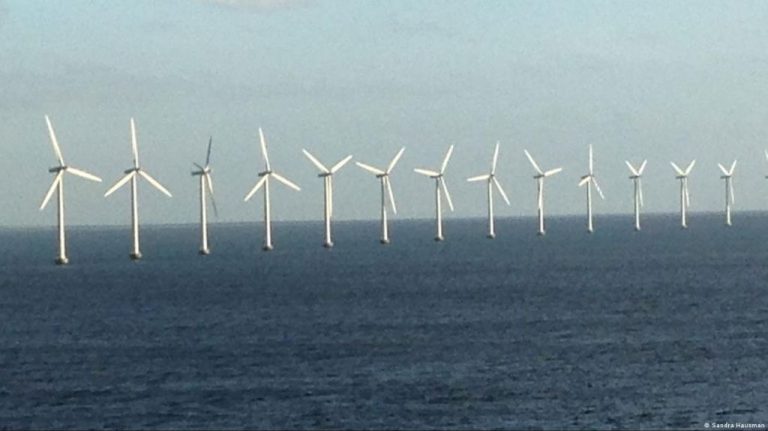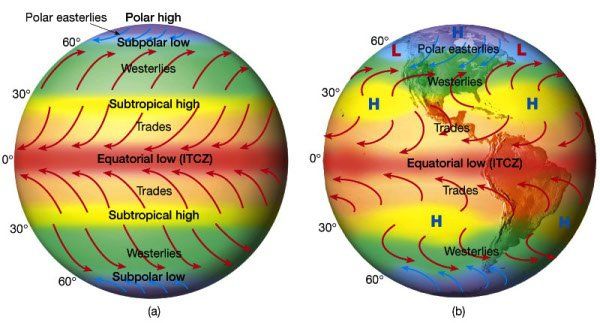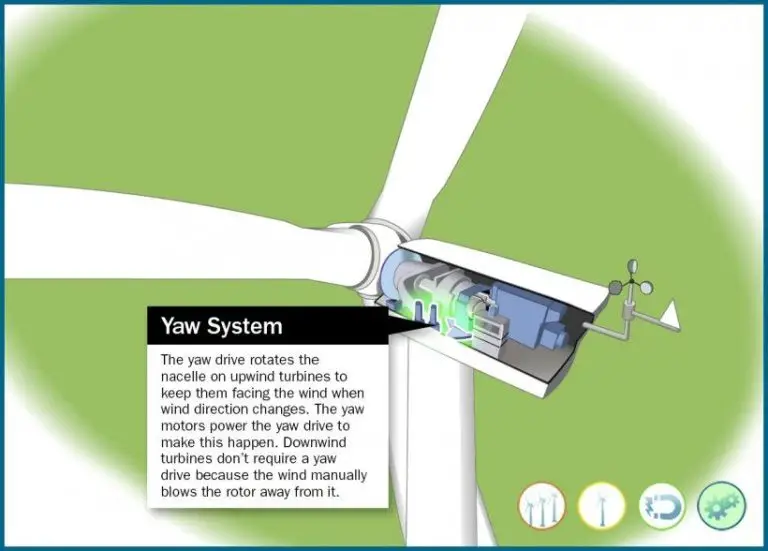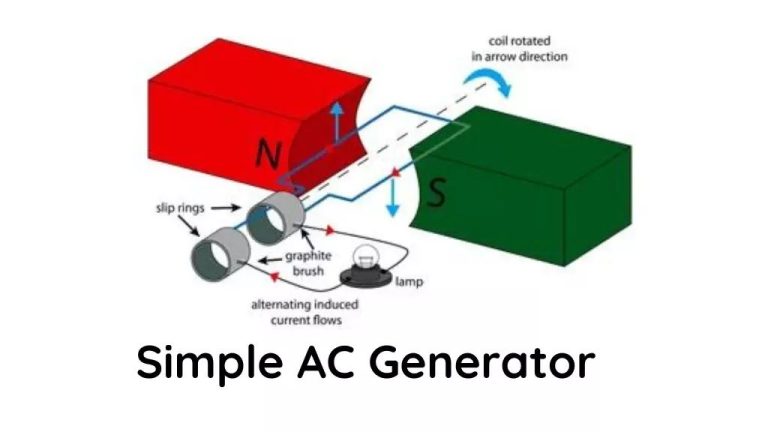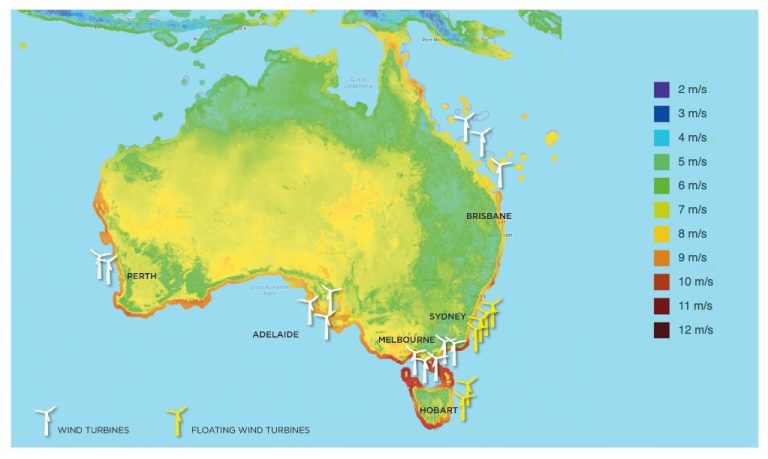Is Offshore Wind Energy Efficient?
Offshore wind energy refers to wind farms located offshore in bodies of water, like oceans, lakes and seas, where wind speed is frequently higher than on land. In recent years, there has been rapidly growing interest and development of offshore wind energy projects around the world as an alternative source of renewable energy. The purpose of this article is to evaluate how efficient offshore wind energy truly is.
Wind Speed Offshore
One of the primary advantages of offshore wind energy is that winds tend to blow stronger and more consistently out at sea compared to on land. The wind flow over water is generally smoother and has fewer obstructions, allowing wind turbines offshore to capture higher wind speeds.
Studies have found that average wind speeds over open oceans and seas are in the range of 7-9 meters per second (m/s) at a height of 80 meters, compared to around 4-5 m/s on land at the same height. This means offshore wind turbines can generate up to twice as much power from a given wind turbine. The higher wind speeds offshore also result in higher capacity factors for offshore wind farms, often exceeding 45%, compared to around 25-35% for onshore projects.
The more powerful and steady winds offshore allow for the generation of significantly more renewable energy from the same installed wind capacity. Situating wind farms further out at sea can take advantage of the vast untapped offshore wind resource and produce larger amounts of clean electricity.
Technology Improvements
Offshore wind turbines have become much more powerful and efficient in recent years thanks to technology improvements. The most modern offshore turbines being installed today are enormous, with capacities of 10-15 megawatts each. That’s nearly double the capacity of land-based turbines. Larger turbines means fewer units need to be installed to produce the same amount of electricity.
In addition to larger turbines, the foundations that keep them upright are also advancing. New jacket foundations allow turbines to be installed in deeper waters further offshore where winds are strongest. Floating foundations are also being developed to access even deeper offshore sites.
Operations and maintenance of offshore wind farms is becoming more efficient as well. Specialized vessels, remote monitoring systems, helicopter drones, and other innovations are helping reduce downtime and keep turbines operating at peak capacity.
Transmission Challenges
One of the major challenges with offshore wind energy is transmitting the electricity generated back to the electrical grid on land. Since offshore wind farms are located far from shore, often tens of miles offshore, there is a need for undersea cables and connections to bring that power back to land.
The underwater cables and infrastructure required is very expensive to install and maintain. The farther from shore the wind farm is located, the longer the transmission cables need to be which increases costs. There are also losses in electricity as it travels long distances through cables which reduces efficiency.
Connecting offshore wind to the electrical grid also requires building out additional infrastructure on land at connection points. The variability of wind energy production also requires grid improvements like increased energy storage to balance the flow of electricity.
Cost Comparisons
In the past, offshore wind power has incurred greater installed capital costs than traditional onshore wind. However, large offshore turbines now benefit from economies of scale and other improvements. The installed capital cost per MW of offshore wind has declined substantially, making it competitive with other energy sources.
Examining levelized costs provides an apples-to-apples comparison that accounts for all lifetime costs of building and operating energy plants spread across the total amount of energy produced. According to Lazard’s annual analysis, the levelized cost of offshore wind now ranges from $83-142 per MWh. This compares favorably to gas combined cycle at $44-73, coal at $65-159, nuclear at $118-192, and solar PV at $32-44.
The range depends on project-specific characteristics like sea depth and distance from shore. But overall, offshore wind has reached an inflection point where it can deliver competitive pricing with minimal subsidies compared to other traditional energy sources.
Environmental Benefits
Offshore wind energy has significant environmental benefits compared to fossil fuel power generation. Wind turbines emit no greenhouse gases or air pollution during operation. Whereas coal and natural gas plants emit substantial amounts of carbon dioxide, nitrogen oxides, sulfur dioxide and particulate matter. This air pollution contributes to climate change, smog, acid rain and health problems.
Offshore wind farms are located in bodies of water, so their operation can impact marine wildlife. The spinning turbines may pose a collision risk for birds and bats. Underwater noise and vibration during construction can disturb marine mammals and fish. However, with proper siting and design strategies, these impacts can often be mitigated. Overall, offshore wind’s clean energy production helps reduce environmental damage from fossil fuels.
Energy Yields
Offshore wind turbines tend to have higher capacity factors compared to onshore wind turbines. Capacity factor refers to the percentage of time the turbines generate electricity over a period of time compared to if they operated at maximum capacity continuously. Offshore wind turbines typically achieve 30-45% capacity factors, while onshore wind is usually around 25-35%.
The higher capacity factors offshore are due to stronger and more consistent wind speeds over water versus land. With steadier wind, offshore turbines can generate more annual energy output per megawatt of capacity installed. Recent offshore wind farms in Europe have seen capacity factors around 48%.
However, offshore wind is still an intermittent source of electricity like all wind power. The wind does not blow constantly and energy generation fluctuates, requiring integration with other sources to meet demand. Periods of low wind can impact reliability. Good forecasting of wind speeds and pairing offshore wind with storage or flexible natural gas plants can help smooth out intermittency issues.
Economic Impact
Offshore wind can bring substantial economic benefits to coastal communities. The development, construction, and operation of offshore wind farms creates many local jobs. Port cities see economic activity from serving as bases for construction, installation, and maintenance of turbines. Offshore wind projects also generate demand for a wide variety of services, from engineering firms to vessels to lodging for workers. One estimate found that building 9 gigawatts of offshore wind capacity along the East Coast could support up to $25 billion in economic output and create over 40,000 jobs over 10 years. States like Massachusetts and New York are hoping offshore wind development will bring billions in investment. The Bureau of Ocean Energy Management estimates that by 2030, the offshore wind industry in the U.S. will support up to 83,000 jobs. Many see offshore wind as a way to revitalize port areas and create economic growth and opportunity, especially as traditional industries decline. The offshore wind supply chain also continues to grow in the U.S., boosting the productivity and competitiveness of American manufacturing and shipping.
Future Outlook
The future looks bright for offshore wind energy. Many experts project strong growth in offshore wind capacity over the next decade. Favorable government policies, technology improvements, and cost reductions are expected to drive deployment of larger offshore wind farms.
The International Energy Agency (IEA) projects global offshore wind capacity to increase 15-fold by 2040 under its Sustainable Development Scenario. In the United States, the Department of Energy has set a goal of deploying 30 gigawatts of offshore wind by 2030. Europe, already a leader in offshore wind, aims to expand capacity five-fold by 2030.
In addition to growth projections, costs are expected to continue falling. Larger turbines, improvements in logistics and installation, increased project size, and supply chain development can reduce costs by up to 35% by 2030 according to IRENA analysis. Additional cost savings are possible as project experience accumulates globally. Cheaper financing resulting from proven technology and reduced risks will also lower costs.
With excellent wind resources available in coastal areas near major load centers, offshore wind is poised to play an increasing role in many countries’ energy mixes. While challenges remain, the technology has proven itself technologically and economically viable. With continued growth expected and costs projected to fall, the future is bright for efficient, renewable offshore wind energy.
Conclusion
In conclusion, several key factors support the efficiency of offshore wind energy. The higher, more consistent wind speeds offshore compared to on land enable offshore turbines to generate significantly more electricity. Advancements in turbine technology, including larger rotors and taller towers, also boost efficiency. While transmitting offshore wind power onshore poses challenges, solutions like high-voltage direct current lines mitigate grid constraints. And despite higher upfront costs than other energy sources, offshore wind’s long-term costs are declining.
Overall, offshore wind energy can generate large amounts of clean, renewable electricity at steadily cheaper rates. With capacity factors now exceeding 50% and continued technological improvements, offshore wind is an increasingly efficient energy solution. While the offshore environment brings unique obstacles, offshore wind farms are reliable, productive, and poised to help nations meet renewable energy goals. With more projects underway worldwide, offshore wind has proven itself an efficient source of utility-scale power.

